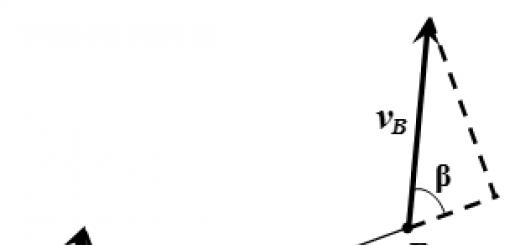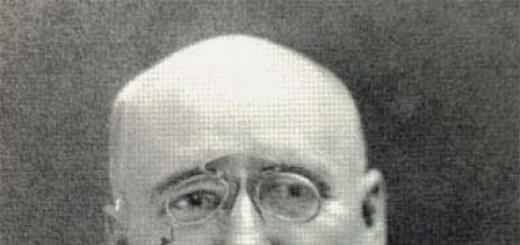Oh, well that's easy enough if you're in 10th grade right now. If at 11, you woke up a little late, of course, but there is still a chance and quite a big one.
First, you need to set a goal for yourself and work towards it. My goal was 100, I started from the very beginning of 11th grade. My baggage was very small, mainly formed on the basis of a course in Russian literature of the 19th century and the work of Karamzin as retold by my father-historian. So you must sit down and clearly evaluate what you can hope for. I was preparing together with a friend, an applicant to a provincial law school, who didn’t try very hard, but he just needed to overcome the threshold of 50 points, which he successfully did.
The best textbook for passing the Unified State Exam is the Moscow State University history textbook by Orlov and Georgiev. You can buy it almost anywhere and it is very convenient. We teach “theory” using it.
Then you need to buy benefits. I took the usual ones from FIPI, plus a separate manual for complex tasks. Take a book with CIMs and solve them, write part C in full in a specially kept notebook. It is advisable to find a teacher who can test them. Or by keys. Solve as many tests as possible and get better at it.
Learn the codifier. Or at least read it carefully several times. You must know how each task is done. What points are given and taken away for? I highly recommend finding materials for teachers testing the Unified State Exam on the Fipi website - there are samples of tasks completed for average and high scores (Part C).
Buy manuals with pictures and maps. The most frequently asked questions about maps are Slavic tribes, major battles and uprisings. It is very desirable to know what each ruler of Russia looks like (I’m not talking about Rurik and Svyatoslav, but it is imperative to distinguish Khrushchev from Andropov and Chernenko).
Keep tables. From the largest battles of World War II to the reforms of Alexander I. If convenient, take notes. I didn’t write and just circled the right places in the textbook because it’s easier for me.
If you want a good score, don't forget about culture. A lot of people miss it, especially those who are not preparing for the Unified State Exam in Literature. Feofan the Greek, Andrei Rublev, Falcone, Ton, Feofan Prokopovich and others, others, others. Learn famous churches, buildings, paintings, artists. There is a lot (!!!) of things here. Don't forget the culture of the 80s and 90s. Including TV shows.
Hang excerpts from your least favorite and difficult topics above your desk. For me, these were all sorts of officials of the USSR (this question is very popular on the Unified State Exam) and the Pugachev uprising, I don’t even know why.
Be prepared to study one topic 8, 9, 10 times. History is forgotten terribly quickly because there is so much information. I advise you to start with the most ancient one and end with Putin, it’s also advisable to learn him, you never know what they’ll come up with.
Find a friend and get ready together. It's fun and interesting, especially if your friend knows much more than you.
And don't express your opinion so clearly. If your grandmother was very offended by Brezhnev personally at one time, do not write nasty things about him in part C, even if it seems to you that you are absolutely right. Be completely neutral.
I myself passed with a 93, and the points were deducted in part C, and, as it seemed to me, this was completely unfair. The appeal had to take place 300 kilometers from my city on the day of my school graduation, and my mother did not let me go. So it goes.
At the DVI in History at Moscow State University (Faculty of History), I scored 95, if that.
Exams are just around the corner, which means that everything that will somehow increase the chances of a good grade will soon be used. Instead of re-reading the textbook, re-read our scientific recommendations - they are more effective than a textbook spell, a teacher’s love spell and a prayer for the audience’s lucky number. Inna Pribora tells how to prepare for the exam and feel confident in it. It turns out that even chewing gum helps.
Sleep in hand
1. Of course, it's tempting to sit in front of a notebook all night, but science strongly encourages you to sleep. It is during sleep that the information received the day before is consolidated. In experiments on rats, scientists have shown that during slow-wave sleep the same groups of neurons are excited in the brain as during the learning that the rats did the day before. That is, in order to better remember Aristotle’s aphorisms, it is best to act like a rat - go to bed early. In your sleep, your brain will once again replay everything it has heard about the philosopher, and then lead you to success in the exam.
Tell friends:
In contact with
Classmates
12 / 05 / 2016Show discussion
Discussion
No comments yet
26 / 08 / 2017Neuroscientist David Perlmutter has developed a program that helps maintain brain efficiency.
09 / 08 / 2017Unusual experiments on sleeping volunteers helped neuroscientists prove that a person can remember new information only during the REM sleep phase, according to an article published in the journal Nature Communications.
10 / 07 / 2017Italian researchers have concluded that daily consumption of chocolate reduces the risk of neurodegenerative diseases.
04 / 07 / 2017Experts in the field of neurology from the UK spoke in the press about those foods that have a pronounced positive effect on the functions of the human brain. Some of the best, according to them, are olive and almond oil.
31 / 05 / 2017Researchers from the United States have named pleasant memories as the best way to deal with stress. They stated that memory can significantly help people in difficult situations when a person is under stress.
25 / 05 / 2017Scientists hope to use their discovery in the treatment of diseases such as epilepsy.
10 / 05 / 2017The simplest method among the most effective.
27 / 04 / 2017How not to fail the Unified State Exam and other exams.
21 / 04 / 2017American scientists studied the cognitive abilities of students depending on the time of day. As a result, experts came to the conclusion that training sessions should begin after 11 am.
06 / 04 / 2017Education researcher Ulrich Boser spoke about the nature of memory to The Atlantic. Theories and Practices translated an interview in which Boser explains why some popular memory techniques don't work.
30 / 01 / 2017Iron deficiency in the body is associated with fatigue, low performance and poor academic performance.
21 / 12 / 2016A new study from the University of Illinois has confirmed that broccoli, spinach and egg yolks are good for the brain, thanks to their high content of the antioxidant lutein. The latter, we recall, is not synthesized by the human body, but comes with food.
14 / 11 / 2016Many schoolchildren and students have no idea how to effectively memorize the necessary information, and therefore use an approach that is usually called cramming. To better understand and remember details, the same text is read several times. Anyone who used this method in school, or, unfortunately, continues to use it in adulthood, knows its main disadvantages: interest quickly disappears, attention is scattered, details are poorly remembered.
24 / 10 / 2016The necessary information will be better remembered if, after memorizing it, you go for a run - this method may well be adopted by students who have to memorize a large amount of information for exams.
30 / 08 / 2016Scientists from the University of Helsinki and the Higher School of Economics conducted a study showing that learning a language increases the plasticity of the brain and its ability to encode information. So, the more foreign languages a person learns, the higher his learning ability becomes.
25 / 07 / 2016There is a whole class of medications that are popular among students. It is believed that these tools help to learn. But, in fact, they harm the brain, experts say. As The Daily Mail reports, according to Nadira Faber from Oxford University, drugs can weaken short-term memory.
19 / 07 / 2016Scientists from the University of Wolverhampton, working together with colleagues from Sheffield, determined that believing in yourself and your goals makes a person more successful.
11 / 07 / 2016Cheating is a sad reality of modern Russian education. The cost of deception is usually low, but the temptation is great - often six months of work are assessed by only one exam. Life.ru has collected funny and, in some places, instructive stories about how students and applicants cheat.
05 / 07 / 2016The frequency of reading books and the level of their content influences students' writing abilities. Quartz writes about the results of the study, published in the International Journal of Business Administration.
30 / 06 / 201610 signs will help you understand how strong your chances are of developing a powerful and sharp mind.
30 / 06 / 2016Movement helps a person absorb information faster, and constant exercise stimulates mental activity. British neuroscientist Ben Martynoga collected research from scientists from different countries on the effects of physical activity on the brain in a column for The Guardian.
16 / 06 / 2016Several episodes from video chronicles, feature films and documentaries, clearly showing the examination system of the recent past.
15 / 06 / 2016Scientists from the University of California, USA, have found that increased activity of the autonomic nervous system during sleep is associated with improved memory. The publication “N+1” spoke about this.
09 / 06 / 2016Scientists have proven that the rapid eye movement (REM) sleep phase is fundamentally important for the formation of long-term memory.
Are you preparing for the traffic police exam? Then urgently read this article, in which I will tell you how to pass your license the first time. Otherwise you’ll have to wait for a retake, and then start going through everything all over again, and it’s not a fact that you’ll succeed the second or even third time. Ilya Kulik is with you again. Go!
The exam itself takes no more than 4 hours, so to get a driving license quickly you just need to pass the exam the first time. And for this you need to properly prepare for them and know some secrets, because of which they go for a retake.
As you know, the state exam for obtaining a driver’s license consists of three parts:
- theoretical part;
- autodrome(site) – testing of initial driving skills;
- city– driving a vehicle in traffic conditions.
Now I will tell you for each of these tests separately, what you need to do and what not to do in order to successfully pass them all the first time.
Theory is the easiest test
The theoretical exam for future drivers usually does not cause difficulties. To successfully pass this stage, it is enough to memorize all the exam papers. Fortunately, this can now be easily done thanks to publicly available online services, where you can repeatedly perform test tasks and receive explanations on them. One of the best sites with exam tickets is perhaps the resource SDA24.com. You can also use printed publications.
In order for ticket information to be assimilated and loaded into long-term memory, use the Ebbinghaus repetition technique - read about the technique at Wikipedia . Because in the period after memorization, the material is forgotten. And meaningful text is remembered 9 times faster!
The UchiPDD app contains a memorization algorithm and contains lectures for all eight subjects in the curriculum - download the UchiPDD app atplay.google.com and on the App Store.
When testing your knowledge with tests, in case of incorrect answers and when choosing at random, carefully read the explanations. The more you decide, the better. It is necessary to achieve error-free execution of all tickets - only in this case can you be sure that during the exam, when anxiety will also interfere, you will not make more than 2 permitted mistakes.
Of course, you shouldn’t forget about studying the Traffic Rules themselves. A deep knowledge of the Rules will not only help you find the answer in a non-standard situation, but is also simply necessary when passing the practical part.
Rules for taking the test
You are given 20 minutes to complete the test; a minute per question is enough to thoroughly think about it, weigh the pros and cons and choose the correct answer. Do not rush to mark an option, read the questions carefully, pay attention to the particle “not”; they ask about permission or prohibition of an action.
Thank you, Ilya, this is an important reminder! You need to read the question and answer options TO THE END, don’t rush! And of course, excitement. You are where your attention is. This means that if attention is focused on excitement, then there is a high probability of error. Concentrate only on solving the tickets, breathe deeply and freely.
The possibility of a random answer must be excluded in accordance with clause 87 of the Administrative Regulations for conducting the driving test: the program accepts the answer only with additional confirmation (for example, by pressing the key again). If this is not the case, according to clause 86 of the same regulations, you must be provided with other, working equipment. But still, avoid accidental clicks, take your time, do not make sudden movements, and do not put your hands on the keyboard.
If you find it difficult to immediately answer any point, move on to the next one: the order in which the tasks are solved does not matter. But do not forget to return to the ones you missed later: after all, the absence of an answer is considered as a wrong decision.
You can hear tips that will help you pass the theoretical exam the first time from the Chairman of the Board of the NP “Guild of Driving Schools of Russia” S. Yu. Lobarev in the following video.
Time is fleeting and the requirements for passing the vehicle driving exam are becoming more stringent. Today, if there is one error, the student receives five additional questions and five minutes of time. And if there are two errors in one block, the red screen lights up.
In the traffic police, you need to know the subject yourself with an “A”
In addition to errors, there is one more reason for marking “FAILED”: the use of cheat sheets, mobile devices, and tips from a neighbor. If the examiner notices this, the driver candidate will immediately stop taking the test.
Therefore, not only do not use prohibited techniques, but also do not give any reason to suspect you of this: do not turn to other examinees, and especially do not talk even on extraneous topics, turn off your mobile phone while taking the test.
Politeness and calm
You can give a couple more tips that will be useful at all stages of passing the driving exams. The first is to behave calmly, politely and respectfully towards the examiners.
If you think that the exam was organized with violations, and the examiners do not agree with your comments, you should not prove that you are right in the dispute: this will only set the examiners against you, which will affect subsequent tests. In such a case, it is necessary to file a complaint in the prescribed manner.
And the second piece of advice: do not take sedatives, much less stimulants. For the theory test, you will need maximum concentration, and for the practical part, you will also need quick reaction time. And various medications can affect these qualities for the worse, which is confirmed by practice: those who take the medicine almost always fail the driving test.
To relieve stress, use your proven means that do not affect your condition: eat sweets, listen to your favorite music, do gymnastics, etc.
Site – passing basic driving skills
On the site, it is not speed that is important, but the correctness of the given trajectory of movement and the fulfillment of other requirements. It is not forbidden to stop, the main thing is to keep the time to 10 minutes.
Upon successful passing of the theoretical exam, the driver who has completed his training is allowed to take the driving test at the race track. Here it is necessary to demonstrate the ability to drive a car.
The main thing is experience
For confident driving, training in a driving school is not enough, since the program pays attention to acquiring the initial skill. If you want to drive confidently, calmly and safely, plan on additional driving hours with an instructor.
Sufficient mastery of driving can only be achieved through practical training. Therefore, thoroughly study the technique of performing the necessary exercises and train, and train. Don’t miss lessons, try to skate the maximum number of hours, although experience shows that this does not always work out. And if training at a driving school was not enough for you to confidently perform all the elements, take additional driving lessons, and don’t skimp.
The need for additional lessons should be foreseen in advance and included in the lesson. Ideally, they will be taught to you by your instructor at a driving school, but you can use the services of any other person who has the appropriate permission.
Self-study – is it possible?
Now only a person who has a special document confirming the right to be an instructor can teach driving, and the car must be equipped, among other things, with additional pedals.
Therefore, you can practice on your own in a relative’s or friend’s car only in a place where traffic police inspectors will 100% not see you, for example, at a summer cottage. Otherwise, the student will face a fine of 5,000-15,000 rubles, and the owner of the car will face a fine of 30,000 rubles. under Article 12.7 of the Code of Administrative Offences.
Moreover, those who practice at motor racing tracks and closed areas are also fined – traffic inspectors also visit them regularly. Therefore, train in such places only with an instructor in a special car.
Exam preparation
On the day of the exam, dress in loose and comfortable clothes, ideally the same ones you usually wore when you practiced. The same applies to shoes. You should not take extra things with you - bags, umbrellas, etc. Firstly, they can distract from driving, and secondly, due to excitement they can easily be forgotten in the car.
Before you start driving:
- adjust proper seat and mirrors;
- start the engine;
- buckle up;
- turning on the low beam Tell the examiner that you are ready to begin taking the test.
When adjusting, do not rush: even if it takes a long time, you will be comfortable driving the car. You can start moving only on command. And don’t forget to take the car off the handbrake – this is trivial advice, but many people taking their license (and even novice drivers) forget about the parking brake, the activation of which must be checked by the examiner before the start of the exam.
If you have a traffic police exam tomorrow, here are a few recommendations:
- Take a walk before bed to get a better night's sleep and avoid being late for your exam. In the evening, put your passport and printed receipt in a visible place. Look in advance and plan your route and time, taking into account possible traffic jams in the morning.
- Start your day with a positive thought! Take a shower and be sure to have breakfast. Mentally plan your day using visualization, imagine everything down to the smallest detail. “You confidently answer theory questions correctly. Fasten your seat belt and calmly perform all the exercises on the site and in the city.” Fix confidence and calm in your mind and body!
- And be sure to breathe! In any stressful situation, pay attention to your breathing and breathe a little deeper than usual! Oxygen relieves the body of adrenaline, and thoughts focused on breathing help to perceive what is happening more adequately.
- Remember that the traffic police inspector is the same person as you, who goes to bed, eats, communicates with friends))) To overcome your fear, it is better to trust him, realizing that he also trusted you by getting into the car you are driving ))
Completing tasks
Perform the exercises carefully and as academically as possible. Take your time, but don't hesitate either. Try to park the machine perfectly parallel to the boundaries where required, keeping a reasonable distance from the lines and posts. All this, in fact, needs to be worked out at the stage of preparation for the exam. If you pay attention to this, all you have to do is show up and, as always before, complete all the elements perfectly the first time.
How examinees are assessed
You should know what exactly is being assessed in the exercises. It’s very simple: there is a certain list of conditions under which the grade “FAILED” is given. The exam will not be counted in the following cases:
- more than 30 seconds passed from the examiner’s command to the start of movement - so follow the inspector’s signals and do not yawn;
- hit more than 2 times to the line borders or marking elements knocked down;
- there was a departure from the boundaries of the site for exercise;
- STOP line crossed when the task requires you to stop in front of it;
- control line not crossed according to the instructions or the distance to it does not correspond to the required;
- the required trajectory is not followed;
- stalled 3 or more times engine;
- was moving in reverse when this is not provided for by the exercise;
- the car rolled back more than 30 cm after stopping on a climb;
- drove through a red traffic light(in the exercise “traversing a controlled intersection”);
- more than the allowed time was spent completing all exercises(for those taking tests in categories M, A, and the time for the “Speed maneuvering” exercise is also limited);
- your foot touched the ground more than 2 times, when the task does not require it, or failure to turn on the turn signal more than once, when necessary, when passing for an M and A1 license.
If the listed events do not occur, the test for basic driving skills is considered passed. But mistakes made at this stage, even when formally passing it, will influence the examiner’s desire to “fail” the future driver at the final test.
So don’t think that just because you’ve rented out the site, you’re guaranteed the rights. The most difficult test yet lies ahead.
Frequent mistakes on the overpass: the engine stalled (it happens that the student’s leg “shakes” from excitement); the vehicle rolled backwards and hit the mounting post; when descending, stop at a distance of more than 1 meter in front of the STOP line.
When performing elements using reverse gear (parallel parking, entering a pit and making a three-step turn), remember that you can only engage it once!
Exam in the city: how to pass it easily the first time
Upon successful completion of the first two stages, the former driving school student is allowed to be tested in real traffic conditions. The difficulty of the exam on the streets is that it is impossible to foresee exactly the situation that will occur during the exam. It is on this test that students most often fail, even if they pass the theory and the stage the first time.
How is a successful driving test determined?
The evaluation criteria are as follows: all possible errors are divided into three categories:
- rude;
- average:
- small.
For one gross error, 5 penalty points are awarded, for an average one - 3, for a minor one - 1. If you score 5 or more points, the exam is not passed. Thus, you can allow a maximum of one medium and one minor, or four minor flaws. At least one serious mistake - failing the exam. You can find their complete list in the following.
Exam preparation
Even at the training stage, you should find out the likely route for the exam and ride along it with an instructor. Practice is key here, so try to drive enough that moving around the city streets won't cause you any difficulty. Take additional lessons if necessary.
Preparation for movement is similar to that before handing over the site. Adjust the seats and mirrors, buckle up, turn on the low beams - this is the mandatory list. If you know for sure that the car is equipped with daytime running lights, then the headlights do not need to be turned on during daylight hours. And don't forget to take the car off the handbrake.
Important! You need to not only buckle up yourself, but also make sure that everyone in the car does the same, including the inspector, who may deliberately not touch the seat belt to check the future driver. Feel free to remind him and the instructor to buckle up. After all, driving with unbelted passengers means 3 penalty points for the examinee.
Pitfalls of the last stage
Traffic inspectors sometimes resort to tricks: they give instructions that contradict the Traffic Rules. Under no circumstances should you comply with such requirements - remember that you are the driver, and only you, and not the inspector, are responsible for compliance with traffic rules. Therefore, at this stage, a very good knowledge of the Traffic Rules is necessary in order to understand when the inspector’s instructions are one of the elements of the task, failure to complete which is tantamount to “failing” the exam, and when it is a cunning trick.
During the exam, the state traffic inspector evaluates the candidate driver’s ability to navigate real city roads in accordance with traffic rules. So, these are not inspector tricks, but road safety requirements.
If the inspector says: “Choose a place, turn around in the opposite direction,” and there is a public transport stop ahead, this does not mean that you are being asked to turn around in a prohibited place. You, as a future driver, must assess the road situation and choose a permitted place to turn around. Be careful and do not shift responsibility for your actions!
At the same time, there are situations when the examiner tries to impute a violation that actually did not occur. If you are sure that the traffic rules are on your side (and for this you need to know them by heart), argue with reason and restraint to the traffic inspector that he is wrong, preferably with reference to the paragraph of the Rules. Practice shows that examiners appreciate the deep knowledge of the future driver and accept the right objections.
Basic driving rules
Do not forget to look in the mirrors; it is better to do this with your head turned so that it is noticeable to the person taking the exam. Use the turn signal when necessary: when starting to move, changing lanes, turning. When stopping, be sure to put the car on the handbrake, especially on inclines. Turn off your mobile phone so that you are not tempted to answer the call. Using a cell phone while driving is a serious mistake.
You need to move confidently, demonstrating your ability to drive a car, but, of course, without recklessness. Excessively low speed, unsmooth gear shifting, inept use of controls - all these are shortcomings for which penalty points are awarded.
Therefore, practice and practice again before the exam. Unfortunately, now this can only be done with an instructor who has an official training permit and in a specially equipped vehicle. But here it’s up to you to decide what’s more important to you: saving money or easily and confidently passing your driving test the first time and quickly getting your license.
- don't skimp on training– driving skills are acquired only through practice;
- train until you can easily complete all tasks - this applies to both theory and practice;
- learn all the traffic rules properly, do not limit yourself to memorizing the situations indicated on the tickets. The key to success in any exam is excellent knowledge of the subject itself, which in the case of driving a car is the Traffic Rules;
- be as careful as possible, take your time, but at the same time be collected - this is necessary at all stages;
- follow the traffic rules exactly when driving around the city, do not forget about the possibility of a trick on the part of the examiner;
- try to be one of the first to pass the exam– sometimes examiners have an unspoken quota on the number of people passing their license in one day, that is, if you are not included, say, in the top ten lucky ones, even with good results, you will be “flunked” because the daily quota has been met;
- Don't worry– if you have studied responsibly, then anxiety is the only thing that can prevent you from passing exams quickly;
- get a good night's sleep before taking your license - fatigue is not a necessary companion at an important event.
Conclusion
A driving test is necessary to ensure that a new car enthusiast can be trusted to drive a car independently. This is a serious test for anyone who wants to become a driver. But with proper preparation and use of the tips from this article, you can easily pass your license the first time.
Did you manage to pass your license right away? Maybe they used some special tricks? Share your impressions and experiences with me and readers in the comments. You can also ask there if something is unclear in the article.
That's all I have for today. Click on the icon of the social network you use and subscribe to the blog, if you have not already done so, so as not to miss the release of new useful articles. Bye everyone, and good luck with your exams!
One of the two compulsory and, by far, the most difficult is the mathematics exam. And although there are relatively few tasks (20), and the time to solve them is a little less than 4 hours (3 hours 55 minutes), most school graduates face difficulties during the exam. This is due to both the incorrect distribution of time when solving tasks and some gaps in the main sections of school mathematics. How to most correctly and rationally prepare for the exam in mathematics in the form of the Unified State Exam?
To begin with, you just need to remember a number of basic things. You must be able to add, subtract, divide and multiply both whole and fractional numbers. It is very important to remember what a power of a number is, especially with negative and fractional values. You can rearrange parts of a sum, but not differences! You must clearly be able to open the brackets, remembering what it means to multiply a negative number by a negative number, or a negative number by a positive number. This will also help to reduce similar terms. We must remember the rules for calculating proportions. All these basic knowledge and skills are mandatory and without them it will be extremely difficult to pass mathematics (and completely impossible to study at a university).
B
If everything is in order with basic knowledge, then you should pay attention to the tasks from block B. They are relatively simple and mainly consist of tasks from the algebra course. The answers are either whole numbers or decimals. There are 14 tasks in total in the block. Therefore, without solving most of them, you should not move on to block C. The following types of tasks are usually presented.
This is necessarily a simple task on finding percentages of a given number, as well as tasks on the ability to use ready-made graphs - you just need to solve it once on your own, these are very simple tasks. Usually there is also a task on simple logic, where you need to add, multiply, compare some integers. You need to know the basic trigonometric formula relating the square of the sine to the square of the cosine:
Since there is always a task to use this formula. There is always a fairly simple task of determining the logarithm, usually in the form of a simple logarithmic equation or an exponential equation. For example:
The answer is, of course, x= 95. There is a task on the basic properties of the derivative of a function - you will have to remember these properties. Thus, half of the tasks in block B are on knowledge of basic things and involve the simplest skills.
The most difficult problems in block B are word problems. You will have to seriously think about them. We must take the unknown quantity as x and try to express the conditions of the problem through this unknown. Problems can also be of a geometric nature, in which case it is necessary to use formulas for the area of a certain figure or the volume of a body. Usually the geometric problem is even simpler. The task can also be of a physical nature, for example, on the speed of movement. In addition, some text problems with a physical meaning are solved without introducing any x at all, since the equation of motion has already been given - in such cases it is necessary to find the derivative of this function. We remember that the derivative of distance with respect to time is velocity, and velocity with respect to time is acceleration. The ability to find the derivative is always a challenge. There are quite a lot of formulas and rules for finding derivatives - you need to remember them. Finally, there are purely geometric problems. Usually one is devoted to the properties of figures on a plane, and the other to the properties of bodies in space. Be sure to know the Pythagorean theorem:
The square of the hypotenuse of a right triangle is equal to the sum of the squares of the legs:
At least half of the geometric problems in the Unified State Exam are solved with its help! In a geometry course, a large number of theorems and properties of different figures are studied - it is not necessary to know them all, many things can be guessed, since they are often obvious - only the answer is written down.
C
Block C contains only 6 buildings, but they are more complex and varied. Two or even three problems are geometric. The highest number of points depends on solving these problems. The score depends on the completeness and correctness of the solution. By and large, the whole difficulty of the Unified State Examination in mathematics lies in solving this block of tasks. You must have at least 2 hours to complete these tasks.
Must be able to solve trigonometric equations and inequalities. The main insidiousness of these tasks is that often to simplify the task you need to know trigonometric formulas, and there are many of them - you need to remember at least the basic ones. There is a task on the ability to solve various systems of equations or inequalities, usually of a mixed nature, that is, containing both exponential, logarithmic equations, and ordinary ones. You must carefully determine the domains of definition of these functions and be able to transform the equations; often, after transformations, you can introduce a new variable, which simplifies the solution. Geometric problems require knowledge of the properties of figures on a plane and bodies in space. Problems on a plane require the ability to competently construct a drawing, from which it is clear what is missing to obtain the answer. Additional constructions may be required. It is also necessary to remember the extended Pythagorean theorem (cosine theorem), the theorem of sines. Often there are problems on the properties of a circle and the figures that are inscribed (described) in it. Spatial problems can be solved 90% with a correctly made drawing; usually it is enough to know some properties of triangles and the theorems listed above. Example of a geometric problem:
The lengths of the edges AB, AA 1 and AD of the rectangular parallelepiped ABCDA 1 B 1 C 1 D 1 are 12, 16 and 15, respectively. Find the distance from the vertex A 1 to the straight line BD 1.
The most complex problems are problems with parameters; there are many types of such problems. It is difficult to give any general recommendations; to solve such tasks you need to train specifically. Finally, there are problems on various types of progressions and sequences in general. Here you need to remember the formulas of arithmetic and geometric progression, and also try to formulate the conditions of the task in the form of an equation. Here is an example of a system with a parameter:
At what values of parameters a and b does the system
has infinitely many solutions?
Thus, there is nothing supernatural in most of the tasks and any school graduate can solve them, subject to careful and thoughtful preparation.
Tasks. At the end of August, official data for the 2019 Unified State Exam was released with minor changes in the structure of tasks.
👉 Russian language
1. The essay evaluation criteria have been changed. Now the emphasis should be on commenting on the problem rather than on the arguments. For comments and illustration examples you can get a maximum of 5 points, for attitude to the author’s position - only 1 point.
Demonstration essay writing task in 2019

Demonstration essay writing task in 2018

3. Changed the format of tasks 2, 9-12.
👉 Biology
1. We changed the model of task 2. Now in it you do not need to choose two correct answers out of five proposed, but work with a table. You can get 1 point for it.


Demo versions of task 2 for the Unified State Exam 2019

Demo versions of task 2 for the Unified State Exam 2019
2. Reduced the maximum score for all tasks from 59 to 58 points.
👉 Foreign language
We clarified the criteria for assessing the essay writing task and added a second topic to choose from. This way, students will be able to write an essay on what they understand better.

Demo version of task 40 for the Unified State Exam in English 2019
👉 Literature
The evaluation criteria for some tasks with a detailed answer have been clarified: 8, 9, 15, 16 and 17.1-17.4.
👉 Social science
1. We clarified the wording of task 25 and increased the maximum score for its completion from 3 to 4. Accordingly, the maximum score for all tasks increased from 64 to 65.

Demo version of task 25 for the Unified State Exam 2019

Demo version of task 25 for the Unified State Exam 2018
2. We also clarified the wording of tasks 28 and 29 and the criteria for their evaluation.

Demo version of task 21 for the Unified State Exam 2019
Technologies. Envelopes with individual sets no longer contain paper sheets, but discs. Forms and CMMs are printed directly in the classroom in front of the students. Rosobrnadzor claims that this eliminates data leakage.
Next year, in some regions, assignments will be transmitted via the Internet. Therefore, if you come across “leaked” assignments from the upcoming Unified State Exam on the Internet, then most likely these are old versions from the open bank of FIPI assignments. Be careful and don't pay any money to scammers.
There is also an online broadcast in the classrooms during the exam. In 2018, it was on 93% of sites. Notes can be reviewed after the exam is completed. According to experts, this helps keep an eye on cheating in exams.
Promises. In 2022, they are going to introduce a third mandatory exam - in English. It, like mathematics, will be divided into basic and specialized levels. Basic will assess English knowledge from A1 to B2 according to the European classification of levels. In other words, “everyday” English for those who do not need it to enter a university.
The profile will correspond to the level of the additional exam in a foreign language, which is currently being conducted. This is the level for applicants to language and international specialties.
Also, by 2019, Minister of Education Olga Vasilyeva planned to introduce an oral part to the Unified State Examination in the Russian language. But so far it is carried out only at the OGE in some regions. There is currently no official data that would confirm the introduction of the oral part of the Unified State Exam in 2019.
There is also no confirmation that history will be made a compulsory subject in 2020.
Items
Required. There are still two of them: Russian language and mathematics.
In Russian, the first part contains tasks with a short answer, the second - with an extended answer. 24 points is enough to obtain a certificate. To enter the university you need to score at least 36 points.
The Unified State Examination in mathematics is divided into two levels: basic and specialized. Since 2019, you can only choose one exam to take.
- The basic level is called “mathematics for life.” Here they test the general knowledge of those who do not need mathematics to enter a university. The exam contains 20 tasks that are graded on a 5-point scale. The minimum number of points is 3.
- The profile level is taken by those who need mathematics at university and who connect their future profession with the exact sciences. Here the tasks are more complex and in-depth. They are assessed on a 100-point scale, you need to score at least 27 points.
If a student receives an unsatisfactory grade in a math exam, he can change the selected exam level and retake it on a reserve day.
To choose from. There are nine items in total:
1. Social studies - minimum 42 points,
2. Chemistry - 36 points,
3. Biology - 36 points,
4. Physics - 36 points,
5. Computer science and ICT - 40 points,
6. History - 32 points,
7. Literature - 32 points,
8. Geography - 37 points,
9. Foreign language: English, German, French, Spanish and Chinese.
The foreign language exam consists of written and oral parts. The written part is compulsory and receives a maximum of 80 points. The oral part, or “speaking,” can be taken on a separate day if desired. A maximum of 20 points is given for it. The minimum score for the foreign language exam is 22 points.
By the way, the most popular elective subject on the Unified State Exam in 2018 was social studies. 53% of participants passed it.
Preparation
Demos. Demonstration versions of control and measuring materials (CMM) help you become familiar with the structure, content, scores and evaluation criteria of the Unified State Exam. But these are not copies of the papers that will be on the exams.
It is best to download demo versions from the official website - this is where exam CMMs are developed. The same applies to printed CIMs: the copy you need should have the FIPI logo. This is the only way you can prepare for tasks that are as close as possible to those that will be on the exams.
Open task bank. The FIPI website also has a bank with Unified State Exam assignments from previous years. It is useful to solve them in order to understand the logic and structure of the tasks.
Examination procedure
The examination point (PPE) is launched at 9:00. You must take your passport and a black gel or capillary pen with you. The computer that will check your work does not consider a different ink color. It's also a good idea to bring a spare pen. Previously we wrote about what else
At the PPE, you are given an individual set of forms and CMMs. You need to check the barcodes and CMM numbers with the values on the control sheet. After which you fill out the registration fields on the Unified State Exam forms and begin completing the tasks.
Depending on the subject you will have 3 - 3 hours 55 minutes. Calculate how much time you will need for each part of the exam, and reserve the last 15 minutes for the final paper. Then carefully and carefully transfer your answers from the draft to the Unified State Exam forms.
Exam stages and results check
⏰ Early stage. It is held for those who, for good reason, cannot attend the exams in May-July. There are five reasons:
- planned treatment;
- participation in sports competitions;
- Military service;
- participation in the Unified State Examination of previous years;
- early mastery of the subject program.
The last reason is an exceptional case. Rosobrnadzor sometimes accommodates those who confirmed the required level of knowledge at the last consultation before the Unified State Exam.
⏰ Main stage. Most schoolchildren take the Unified State Exam there. In 2019, the main part will be held from May 27 to July 1.
⏰ Additional period. It is held in September for those who want to retake the Unified State Exam.
Examination. 7-14 days. Depends on how many people took the subject. For example, checking results in Russian and mathematics usually takes the most time because everyone takes them. The results can be viewed on the official Unified State Exam portal and the State Services website.
Appeal
After the exam, the participant can file an appeal in two cases:
- If the procedure for conducting the Unified State Exam was violated. The application must be submitted on the day of the exam to a member of the State Examination Commission (SEC), without leaving the examination site.
- If you do not agree with the points given. You must submit it to your school within two working days after the results are announced.
An appeal cannot be filed:
- on the content and structure of Unified State Examination tasks;
- to tasks with short answer;
- if you have violated the rules of the Unified State Examination;
- if you have completed the exam paper incorrectly.
We have already written about that.
Retake
If you are unhappy with your Unified State Exam result, you can try to improve it and retake the exam. You can only retake one exam - you will have two attempts on reserve days. If you fail to achieve the desired scores, negotiate a retake for September. This applies to compulsory and optional subjects.
In 2019, you can only retake the Russian language or mathematics and only if you do not score the minimum score. Retake days:
- September 3 - Russian language;
- September 6 - basic mathematics;
- September 20 is a reserve day for both subjects.
Elective subjects can only be retaken next year.










